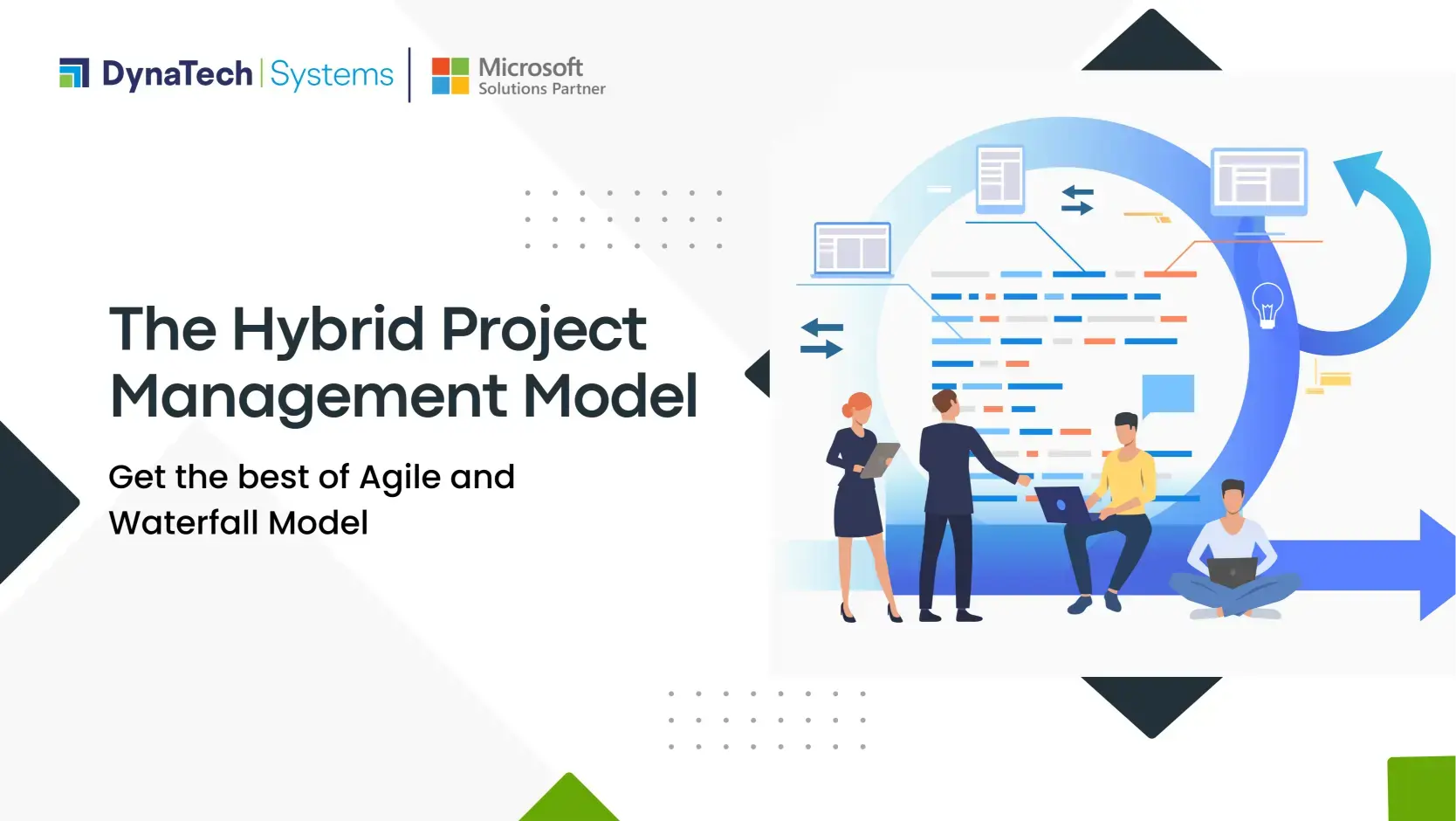All around the world, working methodologies for projects and teams are facing radical changes. Traditional methods that have worked till now might not be as useful as before. For a long time, legacy methods such as waterfall were used to derive structured approach in software development and project management. Though in recent times, waterfalls are still used but the scenario has gotten much bigger. To boost up the software development revolution, agile project management was established. It could be said that agile project management is totally opposite to the waterfall project management.
With the upsurge of technology, it has become incoherent to follow only a single type of project management, whether agile or waterfall. Following a hybrid model is the key to success and making hybrid project management more efficient.
Understanding the primary differences of Waterfall vs Agile
Before diving into the differences, it is crucial to understand the fundamentals of both project management frameworks.
1. Waterfall Project Management
The Waterfall methodology for project management is founded on a sequential design process, with a name that mirrors the process itself. The concept of water flowing from one pool to another in a set order reflects how a project advances from one accomplished task to the next. This sequential flow progresses from requirements gathering to design, implementation, verification, deployment, and maintenance.
The Waterfall methodology is well-suited for:
- Small projects
- Established requirements that are unlikely to change
- Specific deployment timelines
- Projects with a high degree of interdependence among tasks.
While the Waterfall methodology offers several benefits such as ease of comprehension, better budget management, and fewer production issues, it may not be suitable for many modern product development complexities. It lacks the flexibility required for complex or long-term projects. That is why Agile methodology was developed as an alternative.
2. Agile Project Management
The Agile methodology is centered around an iterative approach that emphasizes continuous improvement through collaboration among cross-functional teams. It originated from the Agile Manifesto, which prioritizes flexibility, quality software, customer needs, and collaboration. As the name suggests, Agile methodology enables teams to make mid-course adjustments to address customer requirements and tackle challenges that emerge during the iterative process.
Agile methodology is most effective for:
- Projects that do not have pre-defined deadlines or a complete set of requirements
- Teams who directly manage customers and services
- Software that can progress through repetitions.
- Teams without excessive bureaucracy
- Projects that do not have a fixed budget or strict competition.
- Customers who are willing to provide regular updates to the software.
The Agile methodology is ideal for rapid deployments, smaller budgets, quicker feedback, and experimentation. It emphasizes the “fail fast” philosophy, making it a suitable choice for many projects.
The agile method will give the best solutions when the teams are small to medium. The reason being small teams can act quickly, think flexibly and work autonomously. Most of the application developers and start-ups prefer agile framework for the same reason.
Why Need Agile Methodology ?
Since the long time, multiple frameworks have been derived to structure, analyze, plan, and execute the software development procedure. Companies often want simple-to-use and easy-to-understand project models; therefore, Waterfall was the first choice of many of the IT firms for their software development model. With the passage of time, software developers began to identify the shortcomings of the waterfall model, particularly in the context of extensive and continuous projects that necessitate frequent changes in requirements, a reality of software development. This realization led to the emergence of the agile model as a popular alternative, as it offered Chief Information Officers (CIOs) a way to address the limitations inherent in the waterfall model.
The agile methodology provides several advantages such as enhanced flexibility, agility, adaptability, and better software quality due to its incremental approach. Nevertheless, it also has its own set of limitations, such as reduced predictability, increased user involvement, and insufficient documentation for future citation.
Is it a promising idea to merge Waterfall and Agile?
Even though the Waterfall and Agile framework have their own capabilities and are used comprehensively for their uniqueness, if both frameworks come together on board, it will change the software development scenario entirely. Using the Agile-Waterfall Hybrid model development team can achieve perks of both the frameworks along with timely and recurrent communication for the software development project, meticulous requirements collection, analysis, documentation, and design.
The effective gain from this approach would be a powerful end-product that has the intelligibility and transparency of the waterfall framework while maintaining the flexibility of the agile framework to acclimate the concurrent changes of the project to deliver the enterprise-level modules.
Working with Agile + Waterfall Hybrid model
Classicist IT people may not be in favor of the hybrid model as they deem it a problematic approach. However, for developing a product or software consisting of software and hardware. In this Hybrid model, teams that overlook the software development usually follow Agile model while teams in hardware development as well as project managers stick to Waterfall framework.
Make The Most Out of Hybrid Model :
- If the organization is trying to switch to the Agile framework but is stuck due to its complexity. It is a bit tricky to get involved with Agile model. Organizations should start with Waterfall framework while slowing moving in the direction of Agile. Slow transition from Waterfall to Agile will offer successful results when everyone adheres to the effective transition.
- Your goal is to foster extensive collaboration among teams.
- Although the project has predetermined budget and deadline, incorporating Agile’s rapid design, analysis, and planning techniques could prove advantageous.
The two methodologies can coexist seamlessly because Agile is primarily a mindset and approach rather than a strict methodology, making it feasible to integrate the Agile philosophy with the more structured Waterfall methodology.
How to implement Hybrid Model?
Below steps should be taken to efficaciously deploy the Hybrid model for software development.
- Waterfall can be utilized for planning, design, and requirements definition, while Agile can be employed for development and testing in brief iterations.
- Introduce innovative communication channels and collaborative software tools to facilitate information sharing, ensure data coherence, and track progress throughout the project’s lifespan.
- Engage Product Owners and clients in regular and early communication to ensure their involvement throughout the project’s duration.
- Establish standard compliance expectations and emphasize them during the planning and design phase.
What makes Hybrid model – the most efficient approach?
Here is a brief about why the Hybrid model is the most efficient.
1. Flexibility
In the Hybrid model, project documentation starts from phase 1 itself, but it does have an adaptability to make changes over the project’s duration. At any applicable stage, customization and modifications can be done as Hybrid model has incremental and interactive methodology to software development.
2. Constant Communication
For any project to be successful, communication is a must. During the whole software development cycle, the Hybrid approach ensures that the comprehensive communication between client and team for the seamless development process. By establishing clear communication protocols from the outset, the hybrid model supports smooth and efficient development experience.
3. Reusable Code
The Agile-Waterfall Hybrid Model is particularly effective when there is a need to reuse software code for developing similar or subsequent products. This approach enables a faster turnaround time, which is critical for keeping up with the pace of new product releases and helps achieve necessary time and cost efficiency through reusable code.
4. Responsiveness to amendments
The ability to adapt to change is critical in software development, and the hybrid model facilitates this through continuous integration between the concept stage and production. By synchronizing programs, scenarios, and teams throughout the development process, the hybrid model enables greater responsiveness to change. This approach allows the development team to react to the unpredictable nature of software development and make necessary adaptations in response to emerging and ever-changing requirements in a timely manner.
5. Releases in quick succession
The Agile-Waterfall Hybrid Model enables the establishment of strong requirements definitions and faster iterations through the incorporation of subsequent user feedback into the development process. This model facilitates prompt feedback from different development teams and customers on the ongoing development, allowing for frequent releases and the delivery of working software within weeks, rather than months.
End Note
While it may be tempting to favor a particular methodology, especially if it is what you are accustomed to, it is crucial to prioritize the successful completion of the project. The success of a methodology lies in its ability to keep teams focused, deliver a functional product, and remain within budget. This may require adopting a hybrid approach and may also involve some trial and error.
Adopting the Agile-Waterfall Hybrid Model can help minimize the risk of failure and provide benefits such as increased transparency and agility, leading to improved quality and faster time-to-market.
If you are interested in learning more about how the Agile-Waterfall Hybrid Model can enhance your software development process, connect with Get Expert Help from DynaTech Systems, a Microsoft Solutions Partner today at sales@dynatechconsultancy.com.




























